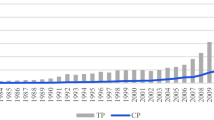Abstract
The problem of measuring the impact of a scientific output of a researcher has attracted significant interest in recent years. Most of the methodologies actual in use focus the attention to bibliometric indices and features of the journals. In this note we propose a new approach based on class of assignment and a fuzzy extension to asses the research output of a scholar.
Access this chapter
Tax calculation will be finalised at checkout
Purchases are for personal use only
Preview
Unable to display preview. Download preview PDF.
Similar content being viewed by others
References
Adler, R., Ewing, J., Taylor, P.: Citation Statistics. A Report from the International Mathematical Union (IMU) in Cooperation with the International Council of Industrial and Applied Mathematics (ICIAM) and the Institute of Mathematical Statistics (IMS). Statistical Science 24, 1–14 (2009)
Alonso, S., Cabrerizo, F.J., Herrera-Viedma, E., Herrera, F.: h-Index: A review focused in its variants, computation and standardization for different scientific fields. Journal of Informetrics 3, 273–289 (2009)
Beliakov, G., James, S.: Citation-based journal ranks: the use of fuzzy measure. Fuzzy Sets and Systems 167, 101–119 (2011)
Bouyssou, D., Marchant, T.: Consistent bibliometric rankings of authors and of journals. Journal of Infometrics 4, 365–378 (2010)
Bouyssou, D., Marchant, T.: Bibliometric rankings of journals based on Impact Factors: An axiomatic approach. Journal of Infometrics 5, 75–86 (2011)
Campanario, J.M.: Peer review for journals as it stands today, part 1. Science Communication 19, 181–211 (1998)
Campanario, J.M.: Peer review for journals as it stands today, part 2. Science Communication 19, 277–306 (1998)
Cardin, M., Corazza, M., Funari, S., Giove, S.: A Fuzzy-based Scoring Rule for Author Ranking - an alternative of h-index. In: Apolloni, B., Bassis, S., Morabito, C.F. (eds.) Neural Nets, WIRN 2011, vol. 234, pp. 36–45. IOS Press (2011)
Coletti, G., Scozzafava, R.: Conditional probability, fuzzy sets, and possibility: a unifying view. Fuzzy Sets and Systems 144, 227–249 (2004)
Franceschet, M., Costantini, A.: The first Italian research assessment excercise: A bibliometric perspective. Journal of Informetrics 5, 275–291 (2011)
Hirsch, J.: An index to quantify an individuals scientific research output. Proceedings of the National Academy of Sciences 102, 16569–16572 (2005)
Kiselman, C.O.: Chararcterizing digital straightness and digital convexity by means of difference operators. Mathematika 57, 355–380 (2011)
Klement, E.P., Mesiar, R., Pap, E.: Triangular norms. Journal of Cybernetics (2000)
Hussain, S., Grahn, H.: Ranking journals, conferences and authors in computer graphics: a fuzzy reasoning. In: IADIS International Conference Informatics, pp. 75–82 (2008)
Terano, T., Asai, K., Sugeno, M.: Applied Fuzzy Systems. Academic Press Inc., Boston (1994)
Turban, E., Zhou, D., Ma, J.: A group decision support approach to evaluating journals. Information & Management 42, 31–44 (2004)
Vincke, P., Gassner, M., Roy, B.: Multicriteria Decision Aid. John Wiley & Sons, New York (1989)
Author information
Authors and Affiliations
Editor information
Editors and Affiliations
Rights and permissions
Copyright information
© 2012 Springer-Verlag Berlin Heidelberg
About this paper
Cite this paper
Cardin, M., Giove, S. (2012). A Fuzzy Method for the Assessment of the Scientific Production. In: Greco, S., Bouchon-Meunier, B., Coletti, G., Fedrizzi, M., Matarazzo, B., Yager, R.R. (eds) Advances in Computational Intelligence. IPMU 2012. Communications in Computer and Information Science, vol 300. Springer, Berlin, Heidelberg. https://doi.org/10.1007/978-3-642-31724-8_5
Download citation
DOI: https://doi.org/10.1007/978-3-642-31724-8_5
Publisher Name: Springer, Berlin, Heidelberg
Print ISBN: 978-3-642-31723-1
Online ISBN: 978-3-642-31724-8
eBook Packages: Computer ScienceComputer Science (R0)




